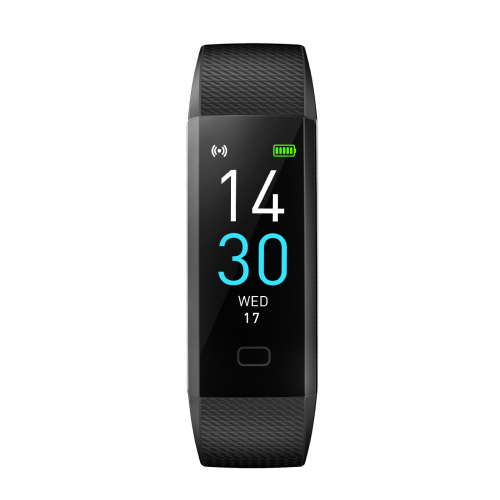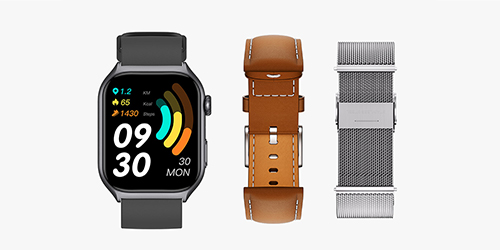Last year, I decided to buy my first smartwatch and was overwhelmed by the myriad of choices, unsure of which features truly mattered. What makes a smartwatch truly smart? Is it the health tracking, the notifications, or something else entirely?
After extensive research and hands-on experience, I discovered the 10 key features that elevate a smartwatch from a mere gadget to an indispensable companion. In this guide, I’ll share these insights with you to help you make a choice that’s worth your investment.
1. Compatibility and App Integration
Most smart watches sync with mobile apps to provide detailed insights, set goals, track progress, and share achievements. Therefore, it’s important to ensure that the smart watch you choose is compatible with your smartphone or other devices.
While most smartwatches on the market are compatible with both iOS and Android operating systems, it’s important to note that compatibility can also depend on the version of the operating system.
Tip: If you want to save your watch data to your preferred fitness app, such as Apple Health, make sure the tracker supports third-party app integration.
2. Bluetooth Calling vs. 4G Calling
Additionally, you need to determine whether you need features like Bluetooth calling or 4G calling. As the name suggests, Bluetooth calling requires the watch to stay connected to your phone via Bluetooth, while 4G calling may support a SIM card or E-SIM card, allowing the watch to function independently as a phone.
Different smart watches may offer different connectivity features like Bluetooth, Wi-Fi, and NFC, allowing you to receive notifications, control music, and even make payments directly from your wrist.
Tip: Consider the impact of these connectivity features on battery life, as more advanced options like Bluetooth calling or 4G calling can significantly reduce your device’s battery life.
3. Display and Screen Size
The display and screen size of a smart watch can greatly affect your user experience. Bigger screens are easier to read and navigate, but they might feel heavier on your wrist. Displays with higher resolution and brightness levels can provide more vibrant colors and sharper text, enabling readability in various lighting conditions.
Tip: If you plan to use your smart watch outdoors frequently, look for one with a bright, high-resolution display, such as an AMOLED display, that is easy to read in sunlight.
4. Health Monitoring
Many smartwatches are equipped with a variety of health monitoring features, including heart rate monitoring, blood oxygen levels, skin temperature, and even non-invasive blood glucose capabilities. Some advanced models also offer ECG functionality and mood tracking. These features can help you keep track of your health metrics and detect potential issues early.
Some may also offer health reminders such as sedentary reminders and hydration reminders, helping you maintain a healthier lifestyle by encouraging regular movement and adequate hydration.
Tip: If you have specific health concerns, consider choosing a smartwatch that provides advanced health monitoring functions and is certified with medical authentications.
5. Sleep Tracking
Understanding your sleep patterns can be crucial for improving your overall health and well-being. Look for a smart watch that offers comprehensive sleep tracking, including detailed analysis of sleep stages (light, deep, and REM), sleep duration, and sleep quality. Some smart watches also provide insights and tips to help you improve your sleep habits and sleep quality.
Tip: Ensure the smart watch is comfortable to wear overnight and has a battery life that can last through the night without needing a recharge.
6. Fitness Features
Fitness tracking is a core feature of most smartwatches. It typically includes step counting, calorie counting, and other activity tracking. You can select specific workouts to monitor your heart rate during workouts, from different sports modes (e.g. running, cycling, swimming). Some smart watches also offer advanced metrics like VO2 max, recovery time, and guided workouts to help you achieve your fitness goals.
Tip: If you participate in specific sports or activities, choose a smart watch that offers dedicated modes and metrics for those activities to get the most accurate and useful data.
7. GPS and Navigation
Built-in GPS is crucial for accurately tracking outdoor activities such as running, cycling, and hiking. It allows you to map your routes and monitor your pace and distance without needing to carry your phone. Reliable GPS can also assist with navigation, helping you find your way in unfamiliar areas.
Tip: If you frequently engage in outdoor activities, choose a smart watch with accurate and reliable GPS capabilities.
8. Smart Notifications
Smart notifications keep you connected by delivering alerts for calls, messages, emails, and app notifications directly to your wrist. This feature allows you to stay informed without constantly checking your phone. Look for a smart watch that allows you to customize which notifications you receive, so you only get the alerts that matter most to you.
Tip: Ensure the smart watch allows you to customize notifications so you only receive the alerts that matter most to you.
9. Water Resistant Level
Water resistance is crucial if you plan to wear your smart watch while swimming, showering, or in the rain. Check the water resistance rating to ensure it meets your needs.
A rating of 5 ATM or higher is generally suitable for swimming and water sports. But remember to always check the seller or manufacturer’s guidelines to make sure the tracker can handle your aquatic adventures.
Tip: If you plan to use your smart watch in water frequently, look for one with a higher water resistance rating and features specifically designed for swimming.
10. Battery Life
Battery life can vary significantly between different smart watches. Consider how often you are willing to charge your device and choose one that fits your lifestyle. Some smart watches offer battery-saving modes to extend usage time, while others may provide longer battery life but fewer features.
Tip: Features that can affect the smart watch’s battery life include GPS usage, continuous heart rate monitoring, connectivity options (Bluetooth, Wi-Fi, 4G), ECG monitoring, and frequent notifications. Understanding these factors will help you select a smart watch that balances functionality with battery performance.






















